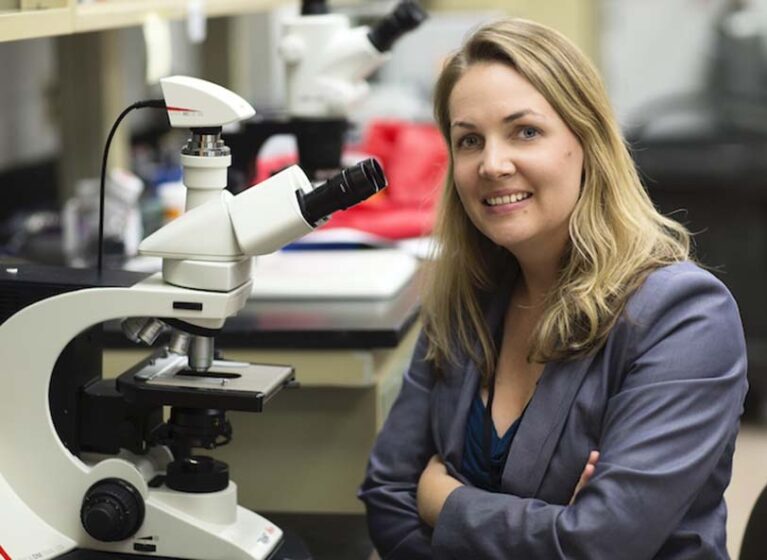
Alzheimer’s, Parkinson’s, multiple sclerosis: How do they develop? How do they work? How do we stop them? Despite decades of research, answers eluded us.
UVA Health was one of the first places in the world to bring together two very different disciplines — neuroscience and immunology. “That’s what attracted me here,” says Tajie Harris, PhD. “They spoke a language I was only able to speak with a few people.”
For decades, medical students learned the brain and immune system were completely separate. UVA Health research shocked the scientific community by proving that isn’t true.
Building on that groundbreaking discovery, UVA Health researchers are now finding the answers to those long-asked questions about the most devastating neurological disorders.
“As we dig into the underlying causes and disease processes, the immune system keeps showing up,” explains Harris, director of UVA Health’s Center for Brain Immunology and Glia (BIG). “This is an opportunity to understand what the immune system is doing.”
Why is that so important? The immune system makes a great target for treatments. “It’s very druggable,” Harris answers. “It allows us to think creatively about new treatments for these diseases.”
Researchers Find a Common Treatment Target for Multiple Diseases
BIG researchers first turned their attention to understanding microglia, immune cells in the brain.
Though the brain parasite Toxoplasma gondii infects more than 30 million Americans, few become sick. That’s because the infection causes microglia to die and release a unique molecule called IL-1a. IL-1a recruits macrophages to control the infection.
“We’re starting to get a picture of how microglia respond,” Harris says. “What’s interesting is there are a lot of parallels between disease states. We were surprised to see microglia responding in a similar way to infection as they were to Alzheimer’s.”
Understanding this pathway gives researchers a common target for treatments. Promoting the pathway could treat infections or cancers while inhibiting it could reduce neuroinflammation in diseases like multiple sclerosis. In the case of Alzheimer’s, “we suspect similar signals are missed or misinterpreted.”
Findings Explain Why Traumatic Brain Injury Is So Harmful
While traumatic brain injury (TBI) has become a major public health concern, it has remained poorly understood.
A recent BIG discovery helps explain why multiple concussions put people at risk for brain function declines later in life.
In 2015, BIG researchers discovered lymphatic vessels in the brain help it purge itself of toxins. Recently, additional research showed that when the brain swells and presses against the skull, it puts pressure on those vessels.
“This provides some of the best evidence yet that if you haven’t recovered from a brain injury and you get hit in the head again, you’re going to have even more severe consequences,” explains researcher John Lukens, PhD.
The research also suggests people may suffer more severe consequences from TBI if they already have problems with their brain drainage, either naturally or from previous concussions. Emerging imaging techniques could help doctors identify patients at greatest risk for severe outcomes.
“Right now, we really don’t know what to tell these kids who want to get back out on the field, or even members of the military,” Lukens says. “It would be important to have empirical tests to say you can continue — or never to do those things ever again.”
Researchers Pinpoint Possible Cause of Lifelong Issues With Brain Function
While scientists had studied the AIM2 inflammasome’s role in the body’s immune response, few had looked at how it works in the brain.
BIG researchers recently found AIM2 inflammasome has an important function in developing brains — it clears away dead neurons. This process is critical to building a healthy central nervous system with the right connections and number of cells.
“Too much or too little is thought to underlie everything from autism to intellectual disability — any type of neurodevelopmental disorder,” Lukens explains.
This discovery could lead to treatments with widespread applications.
“Hitting this pathway in the mature brain would likely provide a treatment strategy for any neurodegenerative disease associated with DNA damage,” Lukens said.